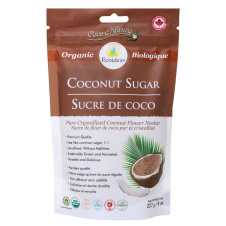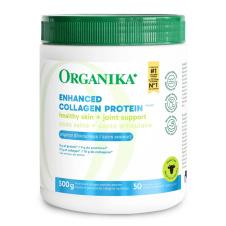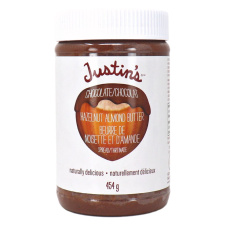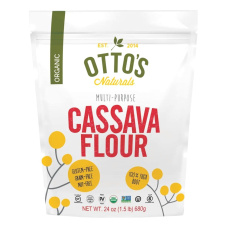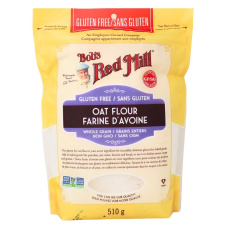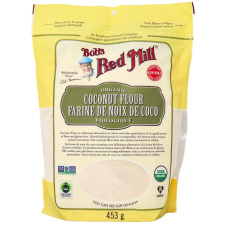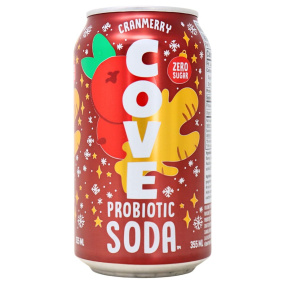
How to Make Desserts Healthy
Ever wonder how all these influencers, chefs, and regular old Joe down the street manage to make healthy desserts that taste delicious? Well, it’s not that complicated, and you can do it too! Like many things, baking or cooking is a science (a delicious one we might add) that involves certain steps and ingredients. And, whether you’re a seasoned baker or a newbie to the dessert world, there are many ingredient substitutions and techniques that allow you to take your dessert from guilty to innocent. Here are five hacks to get you started:
Ditch the Butter
We all know that divine smell that comes from the oven when something delicious is cooking inside. Well, that smell is actually butter. Butter is a key ingredient in a vast majority of dessert recipes. It gives it the iconic “scent” as well as contributes to the texture, flavour, and the height of the product.
However, butter is high in calories and fat; Depending on your personal lifestyle, you may notice that butter has little to no nutritional value and can be a replaceable ingredient in your dessert recipe. In order to replace an ingredient, you’ll need to replace it with something that resembles it in its nutritional profile and behaves similarly in recipes.
In the case of butter, the easiest replacement is oil. An oil such as coconut oil, avocado oil, or ghee, contain healthy fats that are rich in antioxidants and other nutrients. But, if you’re looking for an extra creamy or fudgy texture, then a nut or seed butter makes a great replacement for butter. Now, if your concern is not so much about the nutritional value of butter but rather the high calorie content, then you may want to try to swap butter with applesauce or a mashed banana or avocado. These ingredients behave similarly to butter in recipes all while providing more nutritional value and less calories to the whole recipe.
However, It is important to note that ditching the butter may not be an option in some recipes. Anything that is heavily butter-based like tarts or pastry items will most likely require butter or margarine. Additionally, if you’re just starting out in the healthy baking world you may want to stick to the oil-based substitutions first rather than the fruit substitutions. Once you get the hang of things and how these swaps affect your recipes you can proceed with the fruit substitutions at your discretion.
Flour? Never Heard of it!
Another culprit associated with making desserts more of a sometimes treat than an everyday treat is flour. Like butter, flour has very little nutritional value and a whole lot of calories. Nonetheless, flour is essential in dessert recipes for structure and height. But, fear not, there are plenty of healthy alternatives for flour that will allow you to enjoy more desserts guilt-free. Some common healthy swaps for wheat flour are whole grain flour, almond flour, cassava flour, oat flour, and coconut flour to name a few. These types of flour are richer in fibre, protein and other vitamins, and many are also gluten and grain-free. However, keep in mind that these flours all behave differently in recipes, so you might need a little more or less than what you would usually use with regular wheat flour. These flour alternatives tend to be more water absorbent than regular wheat flour and may dry out your product if you use too much. If you’re unsure or don’t feel like doing the math, then a 1-to-1 flour mix is all you need.
There are also other ingredients that you can substitute flour with that are slightly more advanced. Ingredients such as protein powder, collagen, chickpeas, and black beans are excellent flour replacements. The only caveat is that these ingredients could change the flavour of your baked goods if you don’t adjust the recipe properly. The key to swapping out flour for any of these healthy swaps is “less is more”. Start with a little bit and work your way up to achieve your desired consistency.
Sugar? But, You’re Already So Sweet!
When it comes to anything that is “bad for you”, the first thing you tend to point fingers at is the sugar content. Sugar is an essential ingredient in many recipes from sauces to souffles to creme brulees. Aside from sweetening a recipe, it also works to provide colour (browning), add bulk, and maintain moisture and a fluffy texture. However, sugar comes in at a staggering 15 calories per teaspoon (4g) and with next to zero nutritional value. Considering how much sugar goes into a recipe (approximately ½ to 2+ cups) , swapping out sugar or reducing the amount of sugar in a recipe can make a significant difference to a dessert’s nutritional value. A simple swap for maple syrup, honey, coconut sugar, or dates, can add that natural sweetness that you’re after plus some additional nutrients. But if you’re really strapped on calories then you’ll want to use artificial sweeteners. Keep in mind that all of these sugar substitutes tend to be sweeter than sugar, so again, less is more!
Let Me Introduce You To Our Little Friend: Fibre!
Now, when we think of dessert, fibre is probably one of the last things to come to mind. Like, isn’t fibre what you get from fruits and veggies? Why would that be in my dessert? Well, fibre may be the difference between eating one cookie or 12 cookies in one sitting. Fibre is a component of food that helps to fill you up. So, if you ever find that you can’t have “just one”, then you may benefit from having some extra fibre in your dessert.
By default, desserts are typically low in fibre. Fibre is most commonly found in fruits and vegetables, but it is also in nuts, seeds, legumes, beans and whole grains. So, by simply swapping your regular wheat flour to whole grain flour or oat flour, you’ll be adding more fibre to your dessert. Or by adding some roughly chopped nuts is also a great way to add a little fibre and a whole lot of crunch! And, if you can sneak in some fruits, veggies, or beans and legumes like chickpeas, then you’ll be well on your way to making a high fibre dessert! One thing we should note is that the higher the fibre content of your recipe, the more water-absorbent that it becomes; This means that you’ll need to adjust your recipe to prevent creating an overly dry product.
Sneak in Some Protein!
Another nutrient that is often missing in dessert is protein. Not only does protein help to build your muscles, hair, nails, and skin, but it also helps to fill you up. So, like fibre, protein can help prevent overindulging. An easy way to increase the protein content in your dessert is to bake with protein powder or collagen. However, these ingredients can result in a dry product so you’ll have to adjust the recipe. Another great way to add protein to your dessert is to change your flour. Nut-based and whole-grain flours naturally have more protein. Or, you could also bake with beans and legumes for an extra boost of protein. Another great protein option is to incorporate nut or seed-based products into your recipe and even tofu, yogurt or cream cheese! Regardless of what source of protein you choose, adjusting your recipe to accommodate for the extra dryness will be necessary.
Key Takeaways:
You don’t need to skip dessert anymore to live a healthy lifestyle! Adjusting your dessert recipes to include more protein, fibre, and less sugar will significantly improve the nutritional value. Additionally, making healthy swaps for the butter and flour in recipes can also give your desserts a nutritional boost. Combining all or any of these techniques is sure to bring more guilt-free desserts to your kitchen table. However, it is important to note that you don’t have to fully eliminate an ingredient to make a recipe healthier--reduce the amount of set ingredients instead. Regardless of what healthy swaps you make, slight changes to your recipes to accommodate for these new ingredient swaps are inevitable. Nonetheless, these healthy ingredient swaps will allow you to incorporate dessert as part of a healthy diet. Making nutrient dense ingredient swaps is the key to healthy baking. And, with our easy baking hacks you’ll never have to say no to dessert again! Shop healthy baking here!



